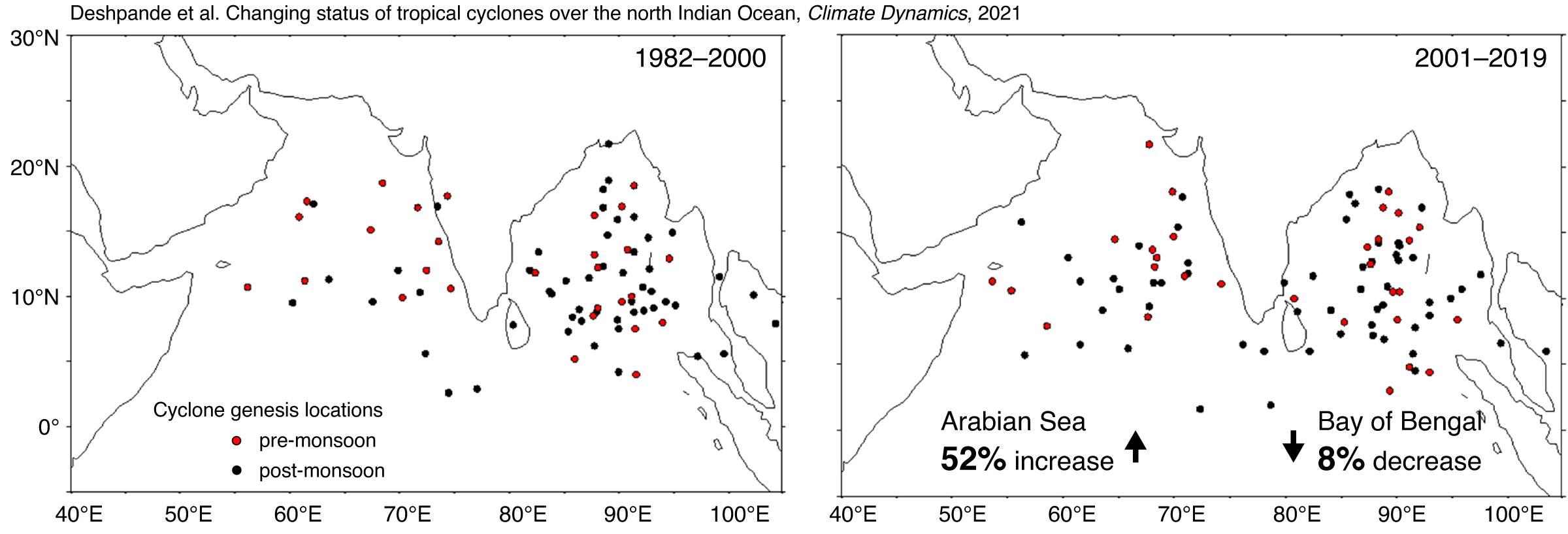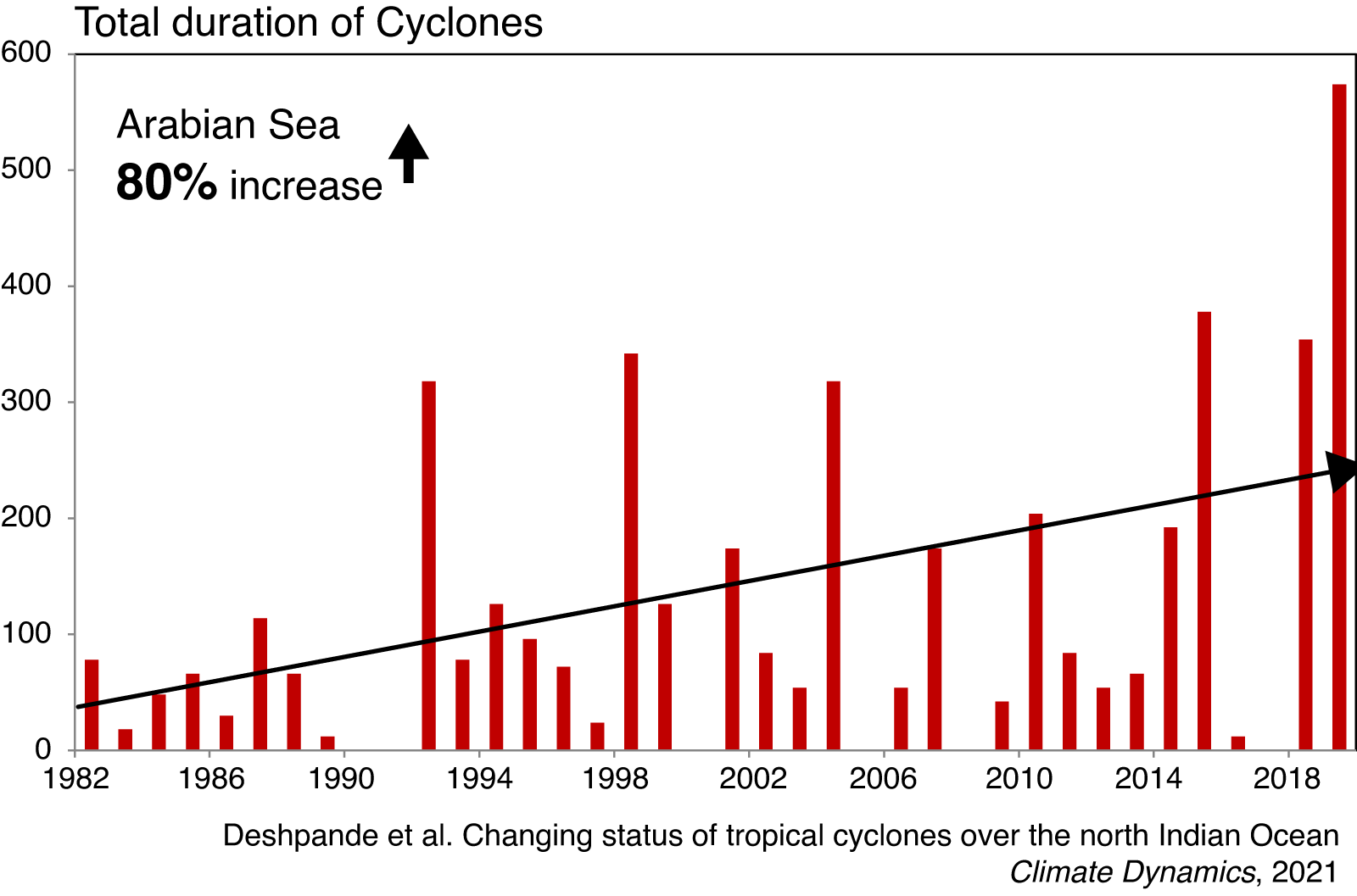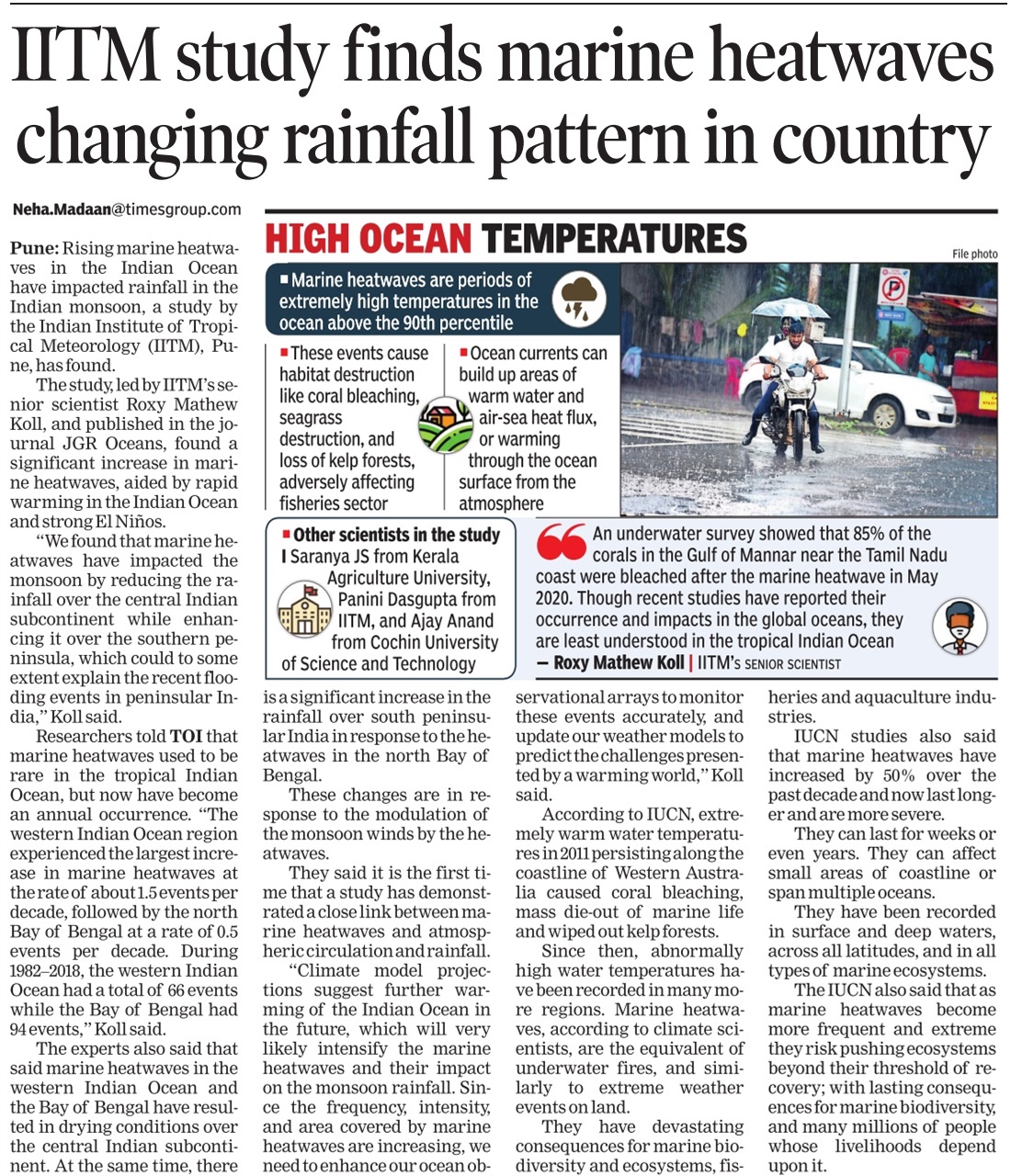Cyclone stats from our study on the “changing status of cyclones in the north Indian Ocean”.
Key message: The frequency, duration, and intensity of cyclones in the Arabian Sea have increased significantly. There’s a slight decrease in frequency in the Bay of Bengal.
Frequency of Cyclones.
◉ 52% increase in the number of cyclones in the Arabian Sea. Very severe cyclones have increased by 150%.
◉ 8% decrease in the number of cyclones in the Bay of Bengal.

Total duration of cyclones.
◉ 80% increase in the total duration of cyclones in the Arabian Sea (during the last four decades). The duration of very severe cyclones has increased by 260%.

◉ No significant change in the duration of cyclones in the Bay of Bengal.
Intensity of cyclones.
◉ The intensity of cyclones also has increased in the Arabian Sea, by about 20% (post-monsoon) to 40% (pre-monsoon).
Accumulated cyclone energy. Accumulated cyclone energy is a measure of the total wind energy during a cyclone’s lifetime.
◉ The accumulated cyclone energy in the Arabian Sea has almost tripled.
◉ No significant change in the Bay of Bengal.
The translation speed of cyclones (the speed at which cyclone moves) has decreased in the Arabian Sea. This means that cyclones are now moving slowly.
Increasing cyclone activity and global warming.
◉ The increase in cyclone activity in the Arabian Sea is tightly linked to the rising ocean temperatures and increased availability of moisture under global warming.
Media Highlights: The study received huge attention in the media, with many newspapers covering it as front-page headlines. See our media section for details.
Reference: Deshpande, M., Singh, V. K., Ganadhi, M. K., Roxy, M. K., Emmanuel, R., and Kumar, U. (2021). Changing status of tropical cyclones over the north Indian Ocean. Climate Dynamics, 1-23 [pdf].




